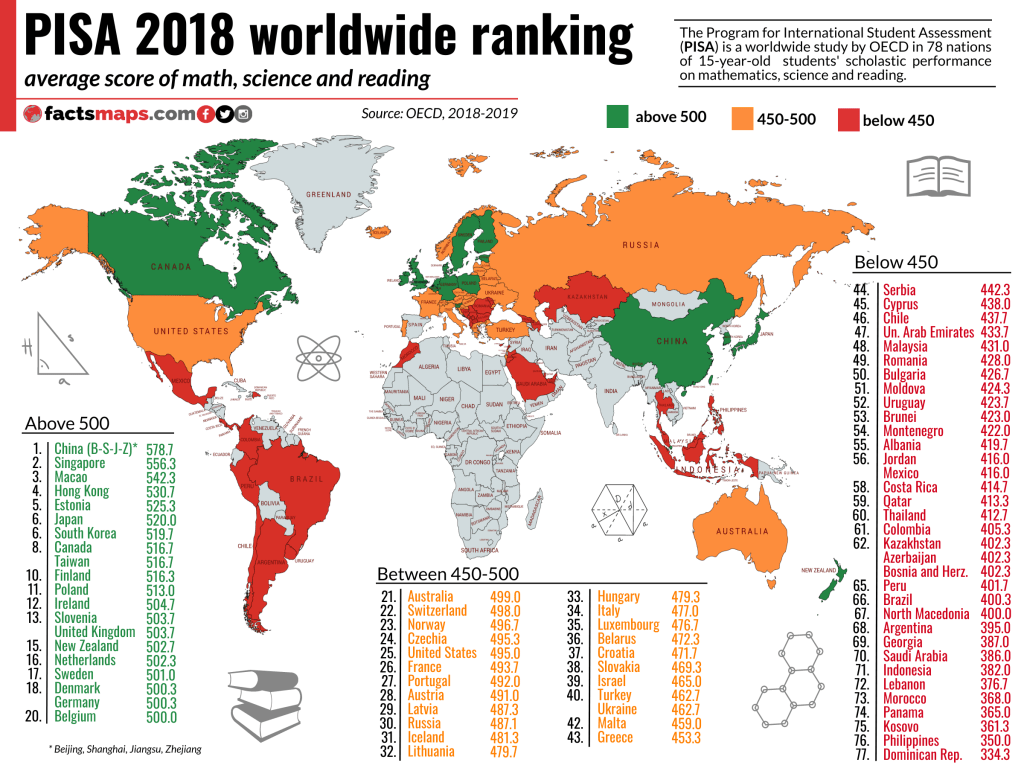The Nordic countries are pioneers in terms of innovation and efficiency in education. The majority of them are among the top 20 best-performing countries in the OECD’s PISA rankings. Our robots are still inspired by the Business France Nordic webinar they attended on February 11, on the education systems of Scandinavian countries. Many practices explain their good results, and we’d like to share them with you.

The expertise of students and teachers is essential for more appropriate digitalization
In France, according to an article in Le Monde, many teachers are on the verge of burn-out, often drowned out by the wave of new technologies that swept through school and higher education during the Covid-19 crisis.
Between adapting courses and using new tools, digital technology has imposed itself on learning in a rather brutal way. But why is there such a discrepancy between the ever-increasing number and performance of educational technologies, and the fact that they are not always widely used?
The fact that northern European countries are quicker to implement technologies, and more responsive in their take-up, is first and foremost because they mobilize all stakeholders in education. The education system is based on the experience of teachers and students, with the aim of ensuring that everyone enjoys learning and teaching.
In Finland, as in Sweden, children are among the happiest in the world! This means, above all, listening to their needs, allowing them to take part in shaping their own education. In Sweden, course formulas are adapted and richer in options, allowing students to develop their learning by personalizing them. But students are also involved in the creation of new educational technologies, testing them out in the classroom. According to Anna Demtyeya, program manager of the xEdu association, co-creation with students and investment by teachers are the keys to progress :
“In Finland, teachers are a considerable force. They drive development, always looking to improve the quality of their teaching. Many of them end up becoming entrepreneurs in the EdTech sector.”
Digitizing teaching also means listening to teachers, who must be at the heart of the debate on digital teaching tools. They’re the ones who work with classrooms every day, who see difficulties and developments, and who can provide solutions.
To this end, Sweden has set up a national testing system with the institution SwedishEdTest, which relies on the expertise of teachers to adapt new EdTech. The teacher tests the technology, learns how to use it and contributes to its effectiveness through feedback, while the EdTech company can reactively identify areas for improvement. According to Hanna Elving, manager at SwedishEdTest, 100% of teachers say they have improved their digital skills after testing the technologies, and this enables them to integrate them more easily into the classroom afterwards.
As you can see, to be responsive and implement new technologies as effectively as possible, everyone needs to be involved and committed to the evolution of learning. The aim is to capitalize as much as possible on everyone’s experience, which requires greater involvement from students and teachers alike.
Raising awareness of information and communication technologies
In Estonia, the leading European country in the OECD’s PISA study, new technologies are taught to pupils as early as elementary school. Indeed, the country believes it is necessary for pupils to master and understand these new technologies in their entirety, so that they develop a greater interest in them. To this end, the government set up the ProgeTiger program in 2012, aimed at raising children’s awareness from an early age. Today, 99% of elementary school have integrated at least one activity proposed by this program.
“If we give children, from an early age, the learning keys and skills to understand, use and create technologies on their own, they will be much better prepared for the future” – Kristi Salum, Program Manager at ProgeTiger
To prepare its students for the world of work, the IT academy, an educational program initiated by the Estonian government, works directly with entrepreneurs. Together, they focus on technological skills, enabling teachers to tailor their teaching to the students’ needs. Today, 1 in 9 students choose to continue their studies in the ICT field*.
In France, Gilles Dowek, a lecturer at Paris-Saclay University and researcher at Inria, says that French education in the digital sciences remains timid. This is due to a culture that is sometimes hostile to new technologies, and a lack of communication between innovations and the general public.
Today, if digital teaching is present in education, it is essential that it remains effective, and this requires ongoing teacher training to keep pace with the skills required, particularly on the job market.
Information and communication technologies*
A national investment
The northern European countries featured in this article benefit from nationwide action plans such as Estonia’s ProgeTiger. In Finland, Sweden, Estonia and Denmark, well-being in education is of prime importance. For them, it’s a mentality and a culture that drives them to look ahead and find the best solutions to adapt to tomorrow’s world.
Greater personal and professional investment, and greater awareness of new digital technologies on the part of everyone involved, are essential. But is France ready to invest as much as its northern European neighbors in supporting and getting to grips with EdTech technologies in education?
If you’re curious about Nordic Edtech investments and operations, this article is for you :
https://medium.com/the-edtech-world/nordic-edtech-landscape-f5a1e7852f79
Discover the EdTech market on the other side of the ocean, in French-speaking America !






